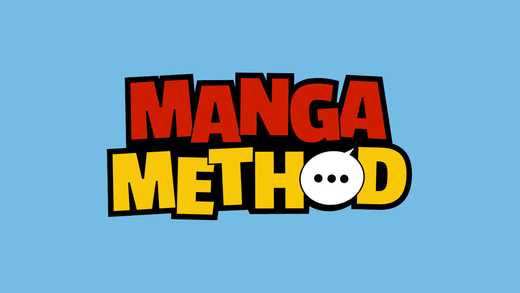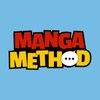Manga Method Review: A Pointless Concept And Poorly Executed
 Written byHubert Nagel
Written byHubert Nagel- Read time4 mins
- Comments0


- Free
- Unsubstantive learning material
- 'Method' is a misnomer (there is no method)
- Atrocious design and buggy platform
- Only a few comics
Manga Method is an alpha-stage, community-driven project that aims to place translations and recordings over interactive comics. The comics themselves are dull, the artwork is very uninspiring and the content is scant (currently very few comics available).
As a concept, it offers virtually zero practical value to language learners.
Manga Method has been doing the rounds on social media, so I thought I’d take some time to comb through the project and give my thoughts.
It’s an early, alpha-stage concept, understandably riddled with bugs and low on content given the stage of its development, but I thought it might be good to share some preliminary thoughts on its concept and execution.
Overall, I see no value or even potential value in Manga Method.
I’ll explain why below.
What is Manga Method?
First of all, “method” is a misnomer.
There is no method here.
Manga Method consists of a very small library of outsourced comic reels that can be read in the browser (multiple illustrators/authors), with community-sourced written and audio translations.
Users are able to create free accounts and contribute by translating and recording each comic strip in their own language.
The comic ‘speech bubbles’ are then made interactive, with the user able to click to hear the recording, or double click to be able to view alternative translations and individual word meanings.
Where multiple translations are contributed, individual contributions can be upvoted or downvoted, with the highest one becoming “default”.
There seems to be allocation for dozens of languages, but at the time of this writing, only a few languages actually have contributions.
Using comics to learn languages
I have to be up front: I’m extremely biased against comics as a genre for learning material.
Even just as reading material, I’ve never cared much for the genre.
I just cannot understand the appeal of sitting for an extended period of time actually reading comic books, whether for enjoyment or education.
Why?
Because there’s no depth to the actual reading material itself - comics are primarily made up of quips, isolated words, and short descriptions - labels attached to pictures.
No authentic dialogues or surrounding, literary context.
To give you a random example from Manga Method, this is the extensive reading material you’ll find in the 2nd chapter of The Fish that Loved the Bird:
Hey Kaito!
Look! An Avian!
I’ve never seen one before. They never fly over the ocean.
That is because they can’t swim.
What’s the point of reading this?
As the reader, you’re required to infer context from the artwork (which is the focal point of comic books) rather than the text.
The comic book text bubbles are basically an addendum.
And this brings me to my crucial point (and major criticism of Manga Method): comics are an art form. They’re first and foremost about illustrations.
The comics are frankly third-rate garbage
It goes without saying that if you’re going to produce a comic book or comic-based learning product, you need great comics.
Talented artwork.
Most of the comic artwork I’ve seen on Manga Method looks like it was sourced from a 6th grader.
No visual appeal there whatsoever.
This is the dilemma with using comics as a learning genre - you’re relying heavily on the visual appeal of your illustrations to entice the reader, but if the illustrations suck (as Manga Method’s certainly do), you have no reason to waste your time with the accompanying unsubstantive speech bubbles.
Potentially useful features of Manga Method
The user-generated content aspect is something seen on sites like Forvo (which I find useful).
So having the ability for multiple contributors of different languages upload their own translation and recording, and then have the community ‘grade’ that contribution, is the only somewhat promising aspect of this project.
But whether or not it’s useful in the comic book genre is another question.
Nobody wants to flick through pages of low quality drawings to extract a small handful of sentences.
Additionally, being able to click a word and get an instant translation is fine, but there needs to be a way to select whole expressions, collocations and so on for it to be truly useful.
Who created the Manga Method?
The project was put together by Nicholas Dahloff.
Who’s that?
Exactly.
A mostly unknown and shady internet marketer who runs a dodgy fly-by-night “review” farm called All Language Resources.
From what can be gleaned, he’s an American living in Beijing, so could have at least some experience with Mandarin.
Other than that, he appears to have no authority in language pedagogy or linguistics, though he does have a background in gambling.
Manga Method, much like the “curated” (nice way of saying ripped off or stolen) courses on his site, appears to be an attempt to capitalize on the creativity of others without actually creating anything.
Alternatives to Manga Method
As I intimated above, comics aren’t my thing.
But I do know of an app called LingoZING which is available for a few languages and has actually been developed quite well (with high quality comics).
For Chinese, there’s another one called M Mandarin.
My personal suggestion would be to straight out buy hard copies of foreign language comics if that’s your interest and work through them.
Or use an online assisted reader and import/input the texts (e.g. LWT, LingQ or ReadLang), although you’ll be focusing on text without images this way.
Any comic-based language learning resources that I should note here?
Comment below.
 Grab the link to this article
Grab the link to this article